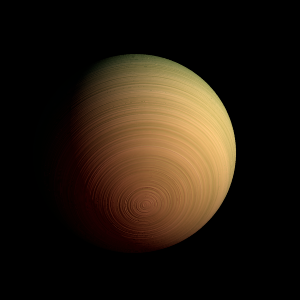|
|
Space Astro
|
Info for exoplanet "Kesurtis'theus"
| Scientific (actual) data |
|---|
| Planet | 14 Her c |
| Planet status | Confirmed |
| Planet mass | 7.1 |
| Orbital period | 52160 |
| Semi major axis | 27 |
| Orbit eccentricity | 0.65 |
| Inclination | 82 |
| Angular distance | 0.381215 |
| Discovered | 2006 |
| Updated | 2023-05-22 |
| Omega | 0.01 |
| Tperi | 2451780 |
| K | 50.8 |
| Publication | Submitted to a professional journal |
| Detection type | Radial Velocity |
| Mass detection type | Astrometry |
| Alternate names | HD 145675 c |
| Star name | 14 Her |
| Right ascension | 242.6° |
| Declination | 43.82° |
| Mag v | 6.67 |
| Star distance | 18.1 |
| Star metallicity | 0.43 |
| Star mass | 0.9 |
| Star radius | 0.708 |
| Star sp type | K0 V |
| Star age | 5.1 |
| Star temperature | 5311 |
| Wikipedia article | 14 Her c |
Back
| |
| Fictional info (?) |
|---|
| Suggested name | Kesurtis'theus |
| Planet type | Large cold gas giant |
| It has the longest rotation period (445 days) of any planet in its solar system and rotates in the opposite direction to most other planets.
Kesurtis'theus and Mirlin Aetur are large cold gas giants rich in gas. This planet is named after the deity Kesurtis'theus, the god of the sea.
The planet telescopically displays the complete range of phases, similar to Venus and the Moon, as it moves in its inner orbit relative to 14 Her, which reoccurs over the so-called synodic period approximately every 139 days.
As seen from 14 Her, in a frame of reference that rotates with the orbital motion, it appears to rotate only once every two years.
The polar regions are constantly below 243°K (-30°C).
It is radically different from Mirlin Aetur in other respects.
Kesurtis'theus's hazy clouds render observation of its surface challenging in infrared light, and the first detailed maps did not emerge until the arrival of the Magellan orbiter 42 years ago.
The smooth Borealis basin in the northern hemisphere covers 20 percent of the planet and may be a giant impact feature.
Because of its fast rotation, the planet's shape is that of an oblate spheroid (it has a slight but noticeable bulge around the equator).
Kesurtis'theus has been explored on several occasions by robotic spacecraft, most notably during the early Pioneer and Daedalus flyby missions and later by the Hawking orbiter. |
| Atmosphere | Argon | 57% |
| Neon | 42% |
| Hydrogen | 0.0045% |
| 2H2O | 0.00029% |
| Atmospheric pressure | 0.0013 bar |
 |
| Moon | Girvos-tusara | Large potato shaped crater-filled asteroid |
| Pete-thetheus | Huge slightly egg-shaped crater-filled asteroid |
| Qeqleber Liacyl | Huge irregular rocky moon |
| Iopho-ka | Very small almost round ice moon |
| Memona-kaldeuces | Medium-sized almost round gaseous asteroid |
| Garet | Huge round crater-filled comet |
| Nixtri Naiad | Medium-sized round rocky moon |
| Kasyco | Small almost round rocky planetoid |
| Masraqlin Thrymr | Large round gaseous comet |
| Enmepaa Theso Ly | Very small potato shaped rocky asteroid |
| Google search for Kesurtis'theus |
|
Website by Joachim Michaelis
|
|
|
|